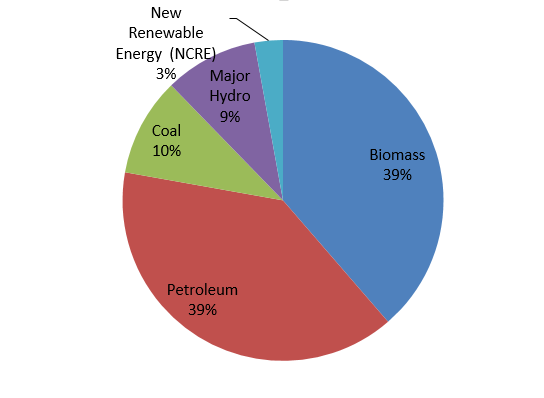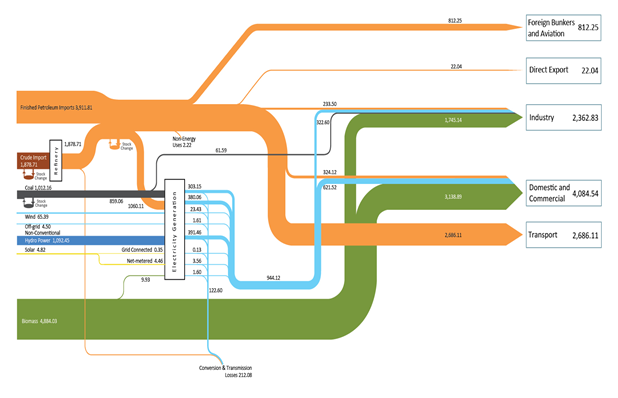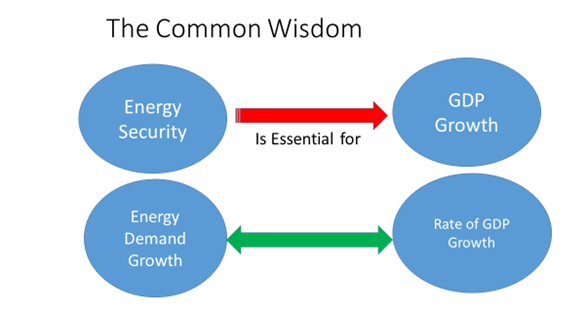|
|
|
Introduction to the series The subject of energy requires an in depth analysis on the aspects of background, historical events and possible strategies and programs for future energy security. These cannot be adequately treated in a single article even for a basic understanding. The present article deals with the social and economic facets of energy in the current environment. The proposed follow up articles will cover |
 Eng. Parakrama Jayasinghe Eng. Parakrama Jayasinghe |
Part II Historical events leading to present crisis
Part III Possible way out of present crisis and a vision and strategy for an energy secure Sri Lanka
1.0 The Current Crisis and Social Dimensions
The much dreaded daily power cuts have been suspended ostensibly to ensure uninterrupted power during the Sinhala New Year. It remains to be seen as to how the deficit in electrical power has been bridged for this purpose and at what cost The onset of the rains in the catchment areas of the major hydro reservoirs will also be a relief not only to the CEB and the beleaguered Minster of power, but also to the suffering masses who could not switch on even a fan to overcome the sweltering heat.
The enormously increased cost of generation with oil based power plant used for the emergency power purchases now euphemistically called supplementary power, will have to be borne by the general public even though it is not reflected in the monthly electricity bill.
In the present day technological world, even for us in Sri Lanka with a very low level of per capita energy consumption, energy plays a vital role and is a resource much in demand across all levels of the society. So much so that we may include energy as the fifth essential component for human existence along with Food, Shelter, Clothing and Medicine. As such in this scenario the energy sector is at the focus of much discussion, mainly due to the recognition that the traditional forms of energy, based on fossil fuels is undoubtedly a limited resource.
Unfortunately the general public and even the engineers do not seem to appreciate that the general public is the major stakeholder in the energy industry and therefore has the right to express their views and contribute to ensure that the future plans and programs are acceptable in the best interest of the country. There seems to be lack of interest, may be borne by dearth of reliable information on the data and issues involved. Such planning cannot be left to a few institutions holding monopoly status or their officials who would naturally have the interests of the said instructions as their prime objective. While this series of articles is aimed at providing some information to the engineers, the empowerment of the Public Utilities Commission of Sri Lanka ( PUCSL ) under the Electricity Act No 20 of 2009 has provided a portal of information at least in the electricity sector. (www.pucsl.gov.lk)
The developing countries including Sri Lanka in particular, aspiring to raise the standard of living of their people, towards the levels achieved by the developed world achieved by cheap fossil fuels in the past, are also faced with the issues of affordability and security of future supplies, if they too are to depend on this diminishing resource.
2.0 The Role of Electricity in National Energy Demand
Under these circumstances Sri Lanka is well advised to device its own strategies and agenda to achieve the desired goals of Long Term Sustainability and Security of Energy Supplies. In this context, recognizing the fact that Sri Lanka has adequate indigenous energy resources and the promise of natural gas from Mannar basin, the attention to maximize the development of its indigenous sources of energy takes the highest priority. It is also necessary to recognize some important issues which appears to be not receiving adequate attention both in the public discourse or the information reaching the public from the relevant authorities. Thus attention needs to be paid on the issues of
2.1 Energy is not limited to electricity.
In fact electricity occupies only a minor fraction of the national energy basket. It is only about 10% of all forms of energy viz.
- Electricity for domestic, commercial, industrial use.
- Thermal energy for industrial use.
- Thermal energy for domestic and commercial use.
- Fuel for transport including agricultural machinery
The energy balance below illustrates the relative importance.

Figure 1: Supply of energy by different sources in year 2015
(Source: Sri Lanka Energy Balance; http://www.info.energy.gov.lk/)

Fig 2 Sri Lanka Energy Balance 2015 ( Sustainable Energy Authority)
However, considering the flexibility of usage and the value of electricity as a highly desirable form of energy, as well as the current state of technologies and economics, which holds up the promise of making electricity the prime form of energy for all energy needs, even in Sri Lanka, this focus is not undesirable. As such this note primarily addresses the issues related to the electricity sector.
3.0 Role of the Engineers in the Energy Sector
It is an undeniable fact that engineers have a most important role to play in all aspects of Generation, Resource Development, Conversion, Distribution ,and Ultimate Usage, of electricity or other forms of energy. As such adequate knowledge and appreciation of these aspects of energy in all its forms is an essential requirement for all practicing engineers , be they directly involved in the different sectors of the energy industry or even as consumers.
4.0 Positive Initiatives already taken
It is important to recognize and appreciate the several pro-active measures that Sri Lanka had initiated, which have already proven their value, for showing the way forward for an energy sector nondependent on imported fossil fuels. These are mainly
a. Net Metering
b. Net Accounting
c. Net Plus
These measures ensured that a total of 515 of NCRE projects were developed up to the end of 2015 and have fed over 595 MWH of electricity to the national grid ( Excluding the contribution of Roof top Solar PV which presently stands at about 170 MW )
5.0 The Way Forward for an Energy Secure Nation
5.1 Paradigm Shift Needed Immediately
In addition there is the need for a major paradigm shift in the way we look at the role and contribution of energy in the national development efforts.


Under the present circumstances we focus only on ensuring uninterrupted supply of energy which can and should be coupled with the move towards making all aspects of energy resource development, conversion distribution an indigenous industry. The feasibility of this move has already been proved by the few dendro power projects commissioned already with millions of rupees flowing to the rural communities. The Roof top Solar Indus has created employment opportunities for high level technical staff.
5.2 The Important Responsibility of the Utility
The CEB which has achieved the enviable goal of providing grid connected electricity to the whole nation has the monopoly in the sector. They appears to have a notion that any one criticizing their projected plans such as the LTEGP, not without reason, is not acceptable. There is an element of truth in this as the data available of the complex grid system and other intricacies are not available to others other than the regulator PUCSL to which the CEB is obliged by law to provide all relevant data. However there seems to be some blackout of this data in recent months. However, it is possible to consider the many options available to Sri Lanka both on the short term, which is the urgent need , as well as for a medium to long term options. These should lead to an energy sector no longer dependent on the use of any imported fossil fuels. Such planning must emerge from a visionary national policy on the energy sector which is a crying need. The initiative of the former Minster of Power and Energy for the development of a Sri Lanka Energy Sector Development Plan for a Knowledge Based Economy 2015 to 2025 provides a glimpse of such a policy. This plan which projected an energy sector primarily targeting indigenous resources by 2030 envisages to
Guide the nation in its efforts to become an energy self-sufficient
nation by developing full potential of renewable and other indigenous
energy resources while achieving maximum energy conservation through exploration, facilitation, research & development and knowledge management' and it is further elaborated by the Ministers Message
"We have set an ambitious goal of 100% energy self-sufficiency by 2030. As a developing economy the challenge ahead of us is enormous and I am convinced that we can reach this goal if we set our priorities right and adjust our actions along the way."
These are very laudable and for Sri Lanka eminently achievable goals, given our past record of near 100% Hydro Power contribution and nearly 50% contribution by biomass to the primary energy supply even now. Therefore, the goal of 100% renewable energy by the year 2030 as envisaged, is not the daunting task as it would appear at first sight.
The development plan also reports that " Current total installed power generation capacity of the country is approximately 4,050 MW, consisting of 900 MW of coal power, 1,335 MW of oil burning thermal power, 1,375 MW of hydro power and 442 MW of non-conventional renewable energy sources such as wind, mini hydro, biomass and solar power plants". The annual total electricity demand is about 10,500 GWh with a projected annual demand growth of around 4-6 % projected to reach 30,645 GWh and 5893 MW by 2030, according to the Long Term Generation Plan of the CEB.
However this plan seems to have disappeared after his change of portfolio. The next sections of this article will examine the feasibility of achieving these objectives.
5.3 Short and Medium Term Options
The twin approaches towards maximum utilization of Solar PV systems particularly the Solar Sangraamaya program coupled with immediately executable Demand Side Measures offer the best method of providing short term solutions, obviating the excessive dependence on emergency power or more oil based power generation.
These as well as many other initiatives already taken, offer effective medium term solutions in line with the principles outlined above. These options will be detailed out in the later parts of this series.
There is no dearth of such indigenous resources to serve us for many decades. The Mechanical Engineering Sectional committee conducted a series of public lectures during the period 2016 to 2017 on the various aspects of Sri Lanka's energy resources and these have now been published in written form titled " Energy Resources of Sri Lanka" which is a ready reference in minute detail of the resources available in Sri Lanka and the ample availability of such resources.
6.0 Interim Comments on the collective approach needed
Sri Lanka has made huge investments on large power plants even including the Norochcholai Coal power planet and many oil based power plants. These still have a significant residual life and such investments have to be protected. What is needed is not to make further investments on such plants anymore which have proven to be not the best solution economically or environmentally. Thus the emerging deficits should be bridged using indigenous resources. We are fortunate that all such resources are also renewable except perhaps the Mannar Gas resource which in any way our own resource.
It is important also to state that is it not necessary for all or any such Renewable Energy Plants to be developed by the private sector. If the CEB could accept the reality that they should be the champions of this change, taking up whatever is viable for them to implement on their own, as is being done in the Mannar Island. Also they should have the perspicacity to leverage the interest and funds of the private sector investors while keeping to the principles stated above and the necessary standards and in keeping with the Least Economic Cost of Generation.
The CEB is quite right to state that there are many complexities and intricacies in integrating new power plans to the national grid, which is their own expertise and mere proposals for development of different resources or technologies is not adequate. However it is also necessary for the CEB to realize that it is their mandate to develop and manage the grid to absorb such changes which are inevitable.
Future Articles.
It is proposed that two more instalments of this series be published early in the SLEN to cover in detail the aspects of
Part II Historical events leading to present crisis
Part III Possible way out of present crisis and a vision and strategy for an energy secure Sri Lanka

"Mr Parakrama Jayasinghe is a Chartered Mechanical Engineer with a BSc Eng (honours) degree from the University of Peradeniya. He is fellow of the Institution of Engineers Sri Lanka and a Member of the Institution of Mechanical Engineers London."
Email: parajayasinghe@gmail.com Mob No ; 0777269970





